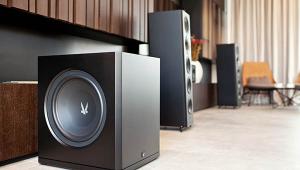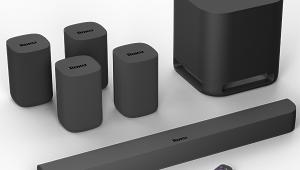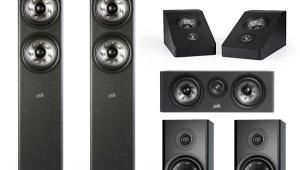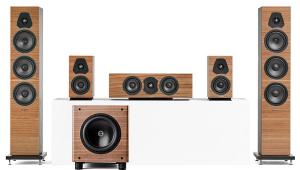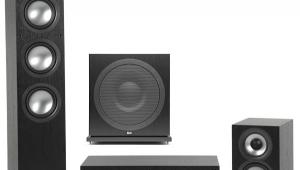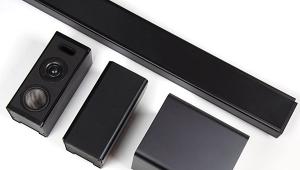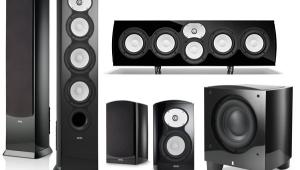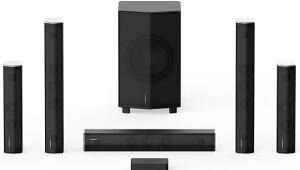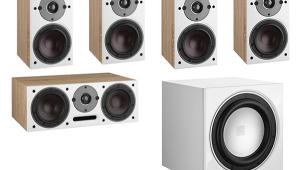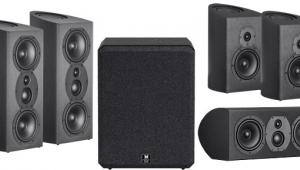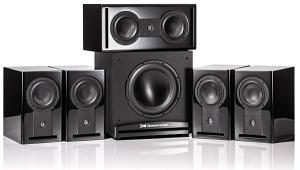Definitive Technology Demand D15 Speaker System Review Page 2
The Def Tech towers displayed a deep, wide soundstage on track after track, even on a near-mono cut like Dylan's "It's Alright, Ma (I'm Only Bleeding)" from Bringing it all Back Home (24/96 FLAC, Qobuz). This 55-year-old recording sounded amazingly alive and pristine, and its modest room-sound and reverb formed a distinct bubble bulging forward and extended almost fully the width of the D15 towers. (I exchanged the placement of the left/right towers to determine if and how much the offset tweeters contributed to this factor, but the time elapsing between swaps made my conclusions vague. A little, for sure, I think….)
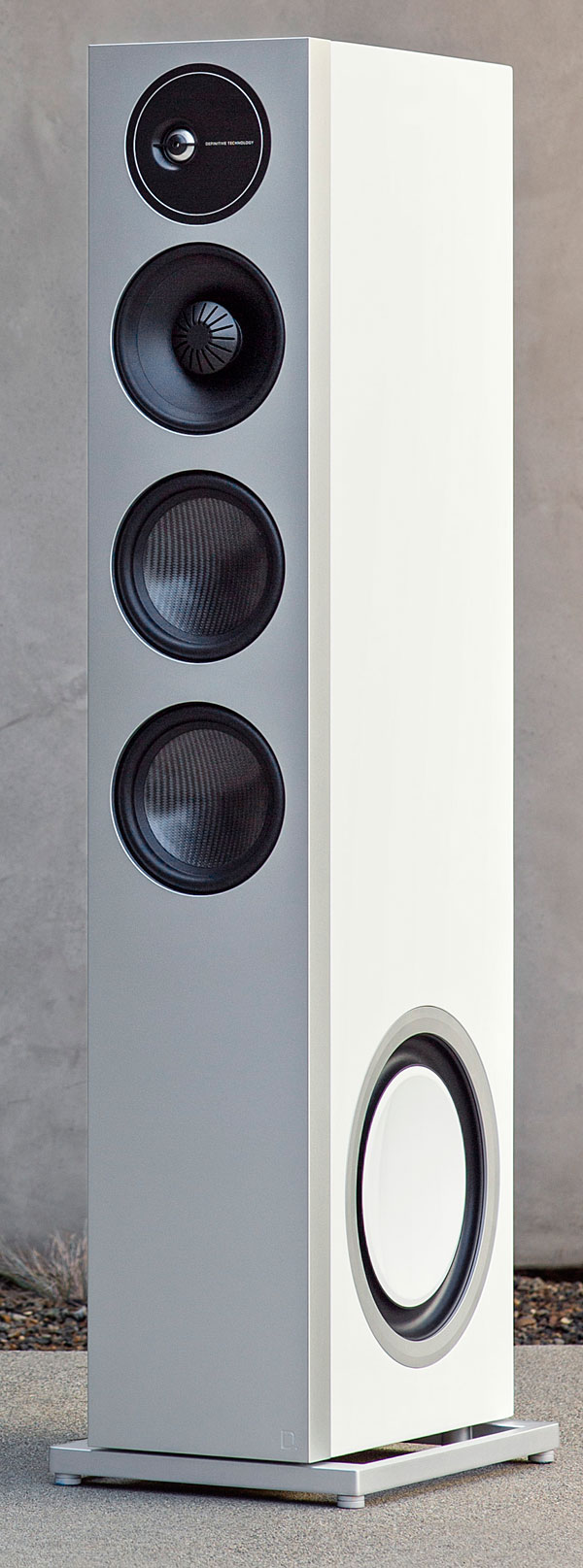
Even a warhorse like the Chicago/Barenboim/du Pré Dvořák Cello Concerto, a 1967 recording (EMI 2005 remaster; 16/44.1 FLAC, Qobuz) evidenced quite thrilling spaciousness. String tones, including the cello, were a shade crisper than from my everyday monitors, yet the midrange-y cello was if anything a similarly subtle shade warmer. The D15s presented even the busiest, most exuberant passages of Dvořák's frequently dense score in a lucid and dynamic manner. The flip side of the Def Tech's impressive spaciousness was that, unsurprisingly, I heard a tighter-focused, more concrete image of the cello here, and also on other strong-center-soloist recordings, via my everyday monitors—not overwhelmingly so, but perceptibly. But these effects are so strongly room- and setup-dependent that I hesitate to even mention them; in fact, moving the Def Techs another foot closer to the listening position reduced the difference noticeably.
Bass extension within the Def Techs' effective in-room limit of perhaps 40 Hz was impressive. The Steely Dan classic "Black Cow" (16/44.1 FLAC, Qobuz) with its strong, 55 Hz "A" in the bass followed by equally strong notes down to about 35 Hz, is a frequent go-to for making quick bass notes (sorry!). It was reproduced here with the rich, satisfying gooeyness (meant to evoke the eponymous ice-cream treat perhaps?) I expected, and I noted approvingly that the lowest "E" was just about as strong. Higher notes, around the 80 Hz region, sounded very slightly tubby and woodier than on my everyday monitors, but pulling the towers even further out into the room also mitigated this a good bit. It's worth repeating that with tower speakers especially room effects can easily dominate response: changes of speaker and listener position can do a great deal. (Even more effective was dialing in a fairly narrow DSP filter, via my Roon software—yes, I'm late to the Roon party, but I arrived there—to reduce my room's dominant mode. This not only tightened and clarified the bass, but made everything else seem more transparent, proving yet again the importance of getting the bass right.)
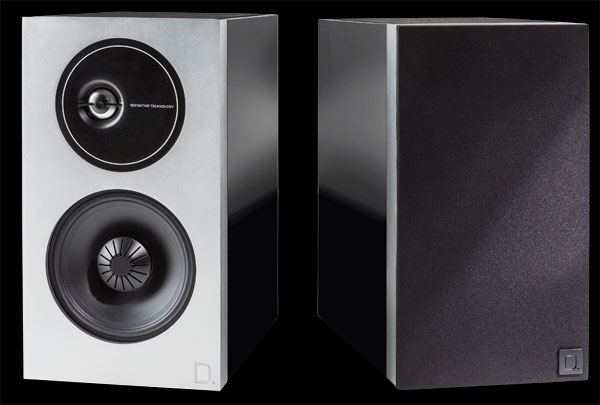
My multichannel investigations began as usual in the middle with the DC5 center speaker, a horizontal two-way employing two of the D15's midrange drivers (visually, at least) astride a tweeter that in this case is offset vertically, and with a sealed enclosure that eschews the passive radiators found in both the tower and surround models. The DC5 proved to be a quite close, though not perfect, tonal match to the D15 towers. Both male and female announcer voices had a slightly more prominent upper-mids and presence region, for a slightly sharper, or more projecting, character; but this struck me as a broad, smooth, and mild emphasis, one almost entirely devoid of specific colorations. Also, the DC5 showed much less tonal change when auditioned 20-40 degrees off-axis—the equivalent of the far end of the sofa—than many other three-driver two-way centers I've auditioned have. Yes, treble and upper-mids fell off significantly, but there was very little of the "honk" or "hoo" character that the off-axis lobing of such designs often promotes.
The D9 bookshelf speaker, which features a rectangular, top-firing passive radiator, worked well in the surround positions, as I would expect any reasonably accurate small two-way to do. Positioned to reflect largely off my upper back and side walls, strong surround effects like over-flying helicopters from Avatar were amply distributed and suitably non-localized. Well-matched sound from direct radiators positioned for serious multichannel music surround remains important, but since music surround is pretty much moribund, I've relaxed my standards considerably for the typical bookshelf surrounds deployed in most real-world home systems. I don't think that much short of fairly severe colorations or distortion, or perhaps extreme beaminess, is terribly significant. (For the record, I did a quick listening comparison of the D9s with the tower: they made a very close match, and, on first impressions at least, seemed a very strong mid-sized two-way.)
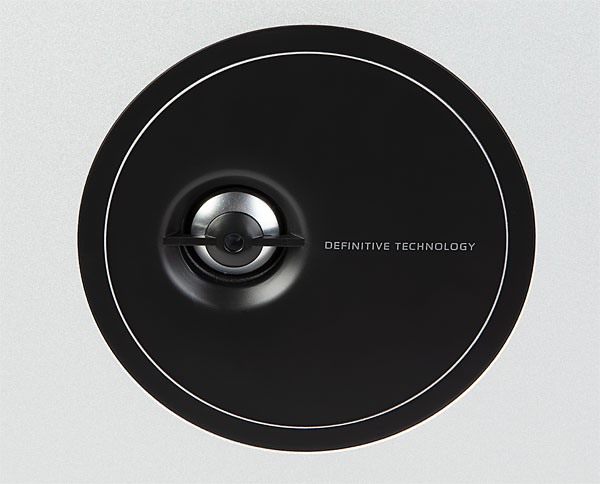
Which leaves full-system movie performance, leading with the question of if the D15-based system offered enough oomph, enough stage-management, and enough extension, for seriously cinema-like movie playback?
To find out, I streamed up, among many other things, the Liam Neeson action vehicle The Commuter, which despite enough plot holes to fill the Albert Hall proved stylish, engaging, and good-sounding and -looking. I was immediately struck by the Def Tech system's solid, well-spread, and nicely ambient presentation of the opening montage and Manhattan street scenes. Dialogue was easily intelligible without being over-projected, and sound effects and spatial cues came across as natural and un-hyped. The system had plenty of output, via my 150-watts-per multichannel amp, to reach fully cinema-like levels free of strain on the modest action sequences that make up most of the movie. And the climactic train-derailment sequence? Ditto: the slam, squeal, and low-end impact of the crash were visceral, even at levels 6 dB or more above my preferred loudness setting.
Could the medium-sized towers rival a fully subwoofer-ed setup on bottom octave wham? To find out, I recalibrated the system with my SVS PC-12Plus subwoofer, crossing all channels over at 60 Hz and repeated the sequence, as well as several other low-end-heavy scenes, both ways. The verdict was beyond debate: while the D16 tower's bass was impressive, the sub-supported setup had obviously greater weight and floor-flexing impact across the bottom octave-plus, as clearly evidenced by stuff like the dino footfalls fromJurassic Park.
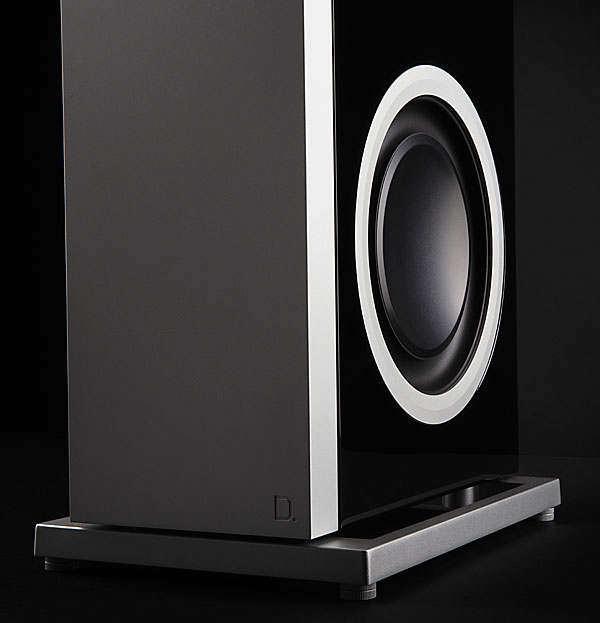
No surprise, of course. But could you live happily with a home theater where these Def Tech towers were the full-range source? I think I could; you don't fully mourn that last octave of high-dB-SPL grunt until you compare before and after. Of course, a lot of folks feel that this bottom octave is an irreducible base—pun intended—of the home theater experience, and I won't argue. But the setup was impressive on its own, and very easy to balance up with a true subwoofer. (For the record, the larger Demand D17 towers extend a mere 6 Hz lower according to Def Tech's specs.) So, system expansion, whether at purchase or later, is eminently worthy of contemplation, and while the Demand series lacks its own sub, brand loyalists will find the company offers a fair range of options in its ProSub and SuperCube lineups.
Conclusion
The parade of outstanding loudspeakers in the affordable range—which I suppose today must extend well beyond this system's $5K price—continues to multiply fast. Add Definitive Technology's new Demand Series to that list, and high upon it, since with music or movies, they deliver very satisfying performance.
